Gym etiquette
The gym can be an intimidating place.
In addition to grunting and weight loss, there is a secret code of conduct that is completely foreign to any newcomer with do’s and don’ts.
These rules of etiquette aren’t just for novices!
I see a lot of “veterans” who completely ignore them or are simply not aware of what they are doing. So whether you’re hitting the gym for the first time or your 500th time, let us explain how to behave appropriately.
Gym Etiquette:
Plus, if you’re nervous about the gym, we turn people from “noobs” to “warriors” in our 1-on-1 online programs. But we don’t take ourselves too seriously, so we’ll program fun missions like “Play on the Treadmill” and “Lift One Easy-Peezy Weight” to ease into it. If you’re interested, check out more here:
Want a customized workout plan you’ll actually do? learn more:
#1) Getting Started and Preparing
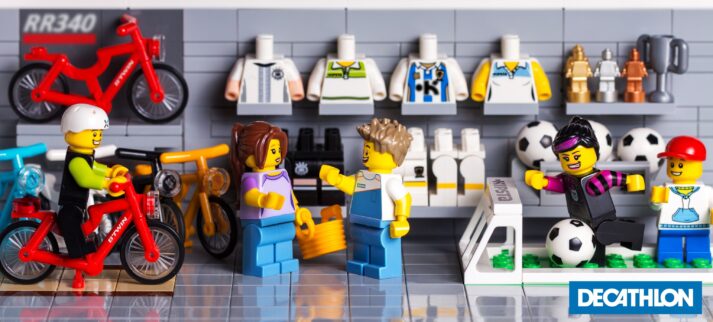
If I had to summarize each gym rule into three simple, guiding principles, they would be :
- Be aware of your surroundings.
- Act like it’s your tool.
- Be calm
Simple, isn’t it? Everything else is just a specific example of these three principles. Now, I’m not trying to be Johnny Buzzkill with all these rules.
Nobody likes Johnny Buzzkill.
Instead, they’re there as a way to keep you and other gym-goers safe, help you feel more confident and comfortable, and get the most out of your gym visit.
1) Read your gym’s rules!
It seems obvious, but when you step into a gym, take a look at any rules posted on the walls. They are there for a reason! And if you’re not sure about a rule, ask a staff member! Some things that are 100% okay for one gym may not be okay for another.
example:
- Are chalk (for your hands-on moves like deadlifts or pull-ups) allowed or not? Some facilities don’t want to clean up the mess, while others allow you to coat the place like Tony Montana’s mansion.
- Are you allowed to squat and/or deadlift? Certain amenities will not be allowed in office buildings because it creates too much noise for other tenants.
- Can you take off your shoes? Some people prefer “barefoot” training, but some facilities require you to wear your shoes at all times for legal/safety reasons.
I could go on and on with the various inconsistencies, but in the end, it always comes down to house rules. It doesn’t matter whether you agree with the house rules or not, even if they are silly and should be ignored. As your father used to say.
2) Shower/wash off your workout clothes!
Yes, I know it sounds weird to shower before your workout, but I’m putting this rule of etiquette here in case it’s been a few days since you last showered.
“I’ll work now and shower later, never mind that I currently smell like turmeric covered in burnt hair.”
People should not smell your arrival.

Keep things fresh!
On that same note, I know some people will exercise, stuff their sweaty gym clothes in a gym bag and then let them sit there and marinate until their next workout. After a few rounds of this, the clothes themselves start to fly out of the bag and run around.
Gym shorts may be able to go for two workouts in a row, but shirts that are probably soaked with some armpit sweat should go straight from the gym to the hamper.
If you are not sure whether this rule applies to you, then this rule applies to you.
3) Use a towel / wipe down tool
Hygiene should be a given when sharing equipment, isn’t it? I hope so, but we’ve all probably seen that person who doesn’t use a towel and/or leaves a big sweat puddle on the bench before they run off. It is gross.
Don’t be that person!
Use a towel (or bring one if one isn’t provided), and be sure to wipe down all surfaces that touched your skin when you’re done with the tool.
Any facility center should have wipes or a spray bottle with disinfectant throughout the gym that you can use to spray and wipe down pieces of equipment. Not sure? Ask the Staff!
This rule is huge, because as I say, “nothing is worse than MRSA”. (My mom was a microbiologist, so I can make that joke).
4) Put away the tools!
This falls into the “what if this stuff was yours” department. After you’ve finished an exercise, put stuff back where it belongs!
Don’t wait until the end of your workout; You must clean up as you go along! Not sure where something goes? Ask the Staff!
If you are lifting and using a bar, please please put the weights back in order. It’s just common courtesy.
Your indifference becomes someone else’s responsibility, which is not good.
Don’t:
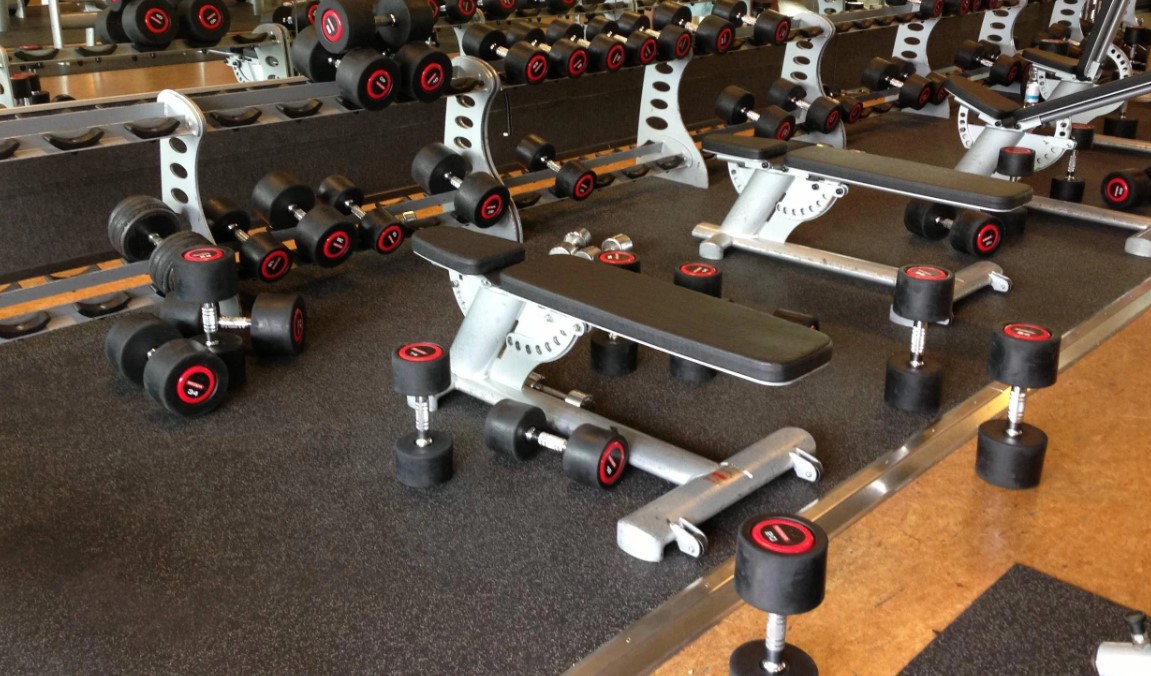
Uh
5) Warm-up / Stretching
What to say about warming up and stretching? You just need to make sure you’re not camping in the walkway.
For most gyms, it should be fairly obvious where you stretch and warm up (there will often be mats or foam rollers around the area). If you’re not sure, just find a spot where you don’t think you’ll be in anyone’s way.
You’d be surprised how many people are prepared to pull all their stuff in the middle of the road and freak out when you have to step on them.
Additionally, these should help:
#2) Dumbbell area

1) move away from the dumbbells
I see it all the time. Someone grabs a pair of dumbbells, then stands directly in front of the entire rack and curls, shrugs, or flaps their arms up and down — as if they’re a mother bird protecting her eggs from predators. .
95% of the time, it’s curls.
I don’t care what exercise you do, but please just grab your dumbbell and take a step away so others can use dumbbells too!
I know some people like to use dumbbells of different weights one after the other, but I swear you won’t pump yours if it takes an extra 10 seconds to walk the dumbbells back to the rack. Will lose You can even increase your grip strength a little more with a quick farmers walk!
2) Give people space
Walk around the weight room like you’re driving defensively. If someone picks up a pair of dumbbells, just place them in front and to the side. With practice, you’ll start to anticipate which exercises they can do, and where their hands (and dumbbells) will be.
You can still walk and walk around them, but only walk in a wider circle if necessary. Getting smacked with a dumbbell isn’t fun for anyone involved. Walking blindly through the dumbbell section is like walking blindly through a windmill field.
Weights can be lifted, moved or operated from anywhere at any time. Keep your head on the swivel and move slowly if you see someone with weights.
3) Do not obstruct anyone’s view of the mirror
There’s a reason there’s a mirror behind the dumbbell rack at any gym – people love to watch themselves lift!
Now, for many, this may be a vanity issue, but for most, it is simply to watch their form.
(Note: Looking in the mirror is not recommended during large/heavy movements like squats and deadlifts).
Regardless, don’t block anyone’s view if it can be avoided! When you see someone staring intently in the mirror and lifting a dumbbell, do your best to stay out of their sight. You can of course walk in front of them, but give them some clearance and be quick!
4) Don’t drop the dumbbells – only dumbos do that
Another common exercise in almost any gym is finishing a set with dumbbells, letting out a big gasp, as if you’re Aquaman and have just come to the surface of the ocean, then lowering the dumbbells to either side of your bench. Drop/Slam.
There are some weights that are meant to be dropped (more on that below) but dumbbells are not one of them. Structurally they don’t respond well to repeated drops, and you’re very likely to break one of the dumbbell heads. I’ve seen it countless times.
If your workout destroys the equipment you’re using, you’re doing it wrong. And no one will think you’re losing weight, I promise. even if they are heavy.
nobody cares.
In fact, they’ll care… if the dumbbell rolls or bounces on their foot.
Don’t be that person.
#3) Barbell and other equipment
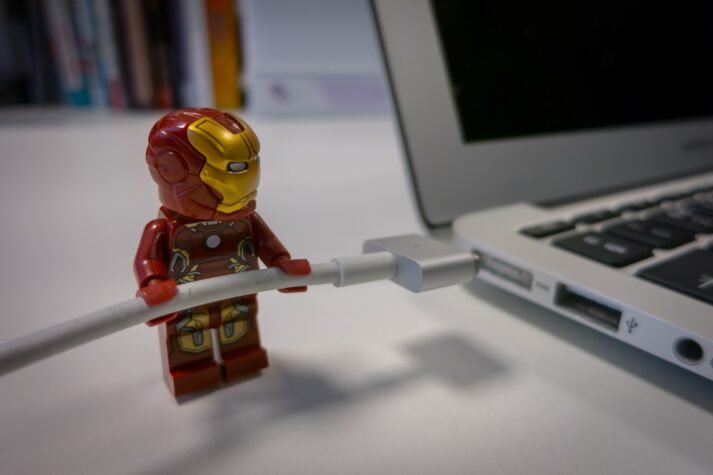
I’m sure there are a lot of people reading this who wish they could work out at the gym with someone else. I hear ya. Unfortunately, this rarely happens, and many of us have to go to the gym when everyone else is there.
How do we share? It’s not that different from how you shared your toys as a child.
1) Check if the device is free first
If I’m using a squat rack, bench, lifting platform, or anything else, I’ll get into my hunt-and-track mode — looking for signs that there might be another lifter in the area.
- Has a towel been laid on it? (usually an indication something is being used)
- Are there other pieces of training equipment lying around , such as notebooks, backpacks, or weight belts? (also a good sign that something is still being used)
- Is there a loaded barbell? (Using the 50-50 tool. People are terrible at losing weight – see my photo above)
After this quick assessment, look around the gym and see if anyone is approaching the equipment or looking at you. If it looks like someone is leaning towards me, closing their eyes, I ask them “Is it free? Are you using it?”.
If there are people immediately around the equipment, I’ll wait until they’ve calmed down, then ask them if they’ve seen anyone use this particular piece of equipment. When that person has their headphones on, this exchange is often a non-verbal point in their direction, then a point on the instrument. Essentially asking them “excuse me, are you using this?”

Writing all this, I’m starting to realize all the non-verbal cues and communication skills I’ve learned in the gym over the past few decades. Brother sign language, as it were.
2) Savings Device
So you’ve assumed that the tool is yours to use, Score.
But now you want to save it when you drink water quickly. No problem! A simple way to do this is to drape your towel over a bench or bar. It’s like a “reserve” card on the table at a restaurant. I often keep my training log on the bench or even under the bar, as it’s another deterrent to someone swiping your stuff.
Note: This doesn’t mean that you can simply drape a towel over the tool, leave for 10 minutes, and then get mad when you come back and someone else has taken it!
If you need to step away from the device for any reason, don’t leave for longer than 30 seconds!
And if you need to go to the bathroom or be out for longer than that, please leave the equipment to those people who are ready to train at that time.
3) “Working” with someone
So there’s a tool you want to use, but someone is using it right now! I go through a few thoughts in my head:
Can I do this exercise elsewhere or substitute it for another exercise? There are countless examples I could refute, but this will be something you will understand with time.
Should I ask to “work with” this person? If the other person is doing the same exercises and/or doing around the same weights as you planned, then it makes sense to ask to work in.
If you’re squatting 95lbs (awesome!) and they’re deadlifting 495lbs, that would involve a lot of weight shifting (and moving the bar) and most people would say “no” to doing the work. Ask yourself if working at will create a bunch of logical problems. If the answer is “yes”, then it is best to wait.
If all lights are green, ask if you can work with someone. After they’ve completed a set, you can change weights if needed and get yourself into sets. After their sets, help them change the weights back to what they were using. If you’re not sure what to do, just talk to the person!
Afraid to talk to someone at the gym about it? Level up your social skills here.
You can ask to do chores, and someone says “no” or “I have a few more sets”. If that’s the case, you wait for the device or do something else. It’s not personal! I would ask them:
- “How many more sets do you have?”
- “How much more time do you have?”
And then decide what to do from there. If it’s only a few minutes, then definitely wait.
If you’re waiting for a piece of equipment to free up, you can stand nearby, but don’t hover! It’s annoying! The person knows you want that piece of equipment.
#4) Circuits and Supersets

Here we are going to explain what to do if you are doing two or more exercises one after the other in a short circuit.
Certainly the best exercises to circuit in the gym are:
Choose things that are close to each other. It drives me crazy to start working on a tool, and then someone comes out of nowhere and says they’re using that tool – they’re in the middle of the room. The other side was just busy doing another exercise. Choose exercises/equipment that keep your range of motion small.
Forget about complicated circuits when the gym is busy. Is Jim busy? Forget trying to get a squat rack and bench and chin-up bar. Pick one. The classic CrossFit workout is the “LINDA” in which you’re using three different barbells with different weights for different exercises, plus a bench (for the bench press). If you ever try to run it in a busy gym, people have a fair right to throw you out the window.
A less complex circuit can be a barbell exercise followed by a body weight exercise during busy gym time. Or even a few on a chin-up bar, then do bodyweight or dumbbell exercises in that immediate area.
Learn to Share!
Whatever you do, don’t grab too many pieces of equipment and then lollygag or mumble on your phone instead of actually getting a workout.
This will draw the ire of your fellow gym goers faster than anything.
#5) Squat Rack, Bench Press and Lifting Platform
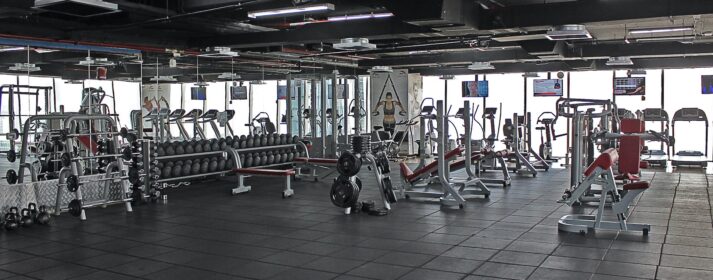
I suggest you read this section even if you think you are miles away from using any of these.
(And if you’re intimidated by using a rack or platform, check out our beginner’s guide to working your way up!)
Here on the squat rack, bench press, or lifting platform, the potential for injury increases if you are careless due to heavy lifting/throwing. So let’s run down some rules of etiquette to remember.
1) Stay away from the lifter’s “bubble”
You’ll want to stay about 3 feet (1 m) or more away from any other lifters, unless you’re looking at them (another article entirely). This is for your safety, and not to disturb them. When in doubt, wait until the lift is completely finished before turning around on them.
2) Stay out of sight of the lifter
It may not sound intuitive, but if you do – stay out of the lifter’s line of sight (a straight area for about 10 feet / 3 meters) when they are getting ready to lift, or while they are lifting.
It is very distracting to walk/commute when they are picking up.
3) If someone is getting ready for the lift, leave them alone
People don’t squat or deadlift right away. There is often mental preparation before actually holding the bar. This is a terrible time to talk to a lifter (except when they are in immediate danger).
How do we know the lifter is getting ready? They will often be facing the bar, looking serious, perhaps with eyes closed in meditation. Look for these signs and give the person their space. After the lift, talk to them after some time has passed.
4) Roll the bar correctly / do not destroy the equipment
For any exercise you do, if you’re destroying the equipment in the process (eg, dropping and breaking a dumbbell, twisting the bar), you’re doing something wrong.
For something like a back squat, set the squat rack safety pins just below your squat depth, and lower the bar to the pins if you get caught:
If you throw the bar behind your shoulders in a squat rack, it will bend/ruin the bar by bouncing off the pins.
If you’re lifting outside the squat rack with bumper plates, it’s perfectly fine to drop the bar to the ground behind you. Lean the bar back and get your butt out of the way.
For more information, here’s how to avoid back squats:
If all this scares you, use a weight you’re confident you can lift (no need to bail), and/or ask a staff member. Just remember that when you bail, both you and the bar must be in good shape afterward!
5) Use the right bar!
The standard barbell in most gyms is 45 pounds/20 kg, but some gyms may have women’s bars (33 pounds/15 kg) and even exercise bars (15 pounds/5 kg). If you load a 15-pound bar (often made of lightweight aluminum) with 45-pound plates, you can easily bend and ruin the bar.
Again, we recommend not destroying your gym equipment. If you’re not sure of the bar weight – ask a staff member (that’s what they’re there for!) or even a fellow lifter.
6) Bench press, and squat properly: danger danger
This may be less a matter of etiquette and more a matter of safety, but make sure you land the bench press or squat evenly on both sides. This may take a little longer as you remove one plate from one side then a plate from the other side, but trust me when I say this is exactly the way you have to work .
If you take all the weight off one side and leave it with a ton of weight on the other (anything over a 45lbs / 20kg difference worries me), you put the bar in a very unbalanced position , and it can easily flip sideways from a bench or squat rack, especially if bumped.
I pray you never see this happen, because it is scary and could cause serious injury to you or others around you.
7) Asking or giving space
A “spot” is just an aid during the lift. We could write an article about it (and Critical Bench has written an excellent article). If someone asks you for space and you feel uncomfortable, just decline and say you’re not comfortable with it! They’ll understand!
If you need a spot, just ask someone who looks strong nearby and is currently available. In your gym career, you’ll probably bench press 99.9% of the time.
Before I give or take a position, I’ll make sure we’re both clear on the following key points:
- “Do you want a lift or not? (help the bar out of the rack)”
- “How many reps are you going to have?”
Whatever is special must be put away before the bar goes out and moves on. There’s a lot to cover, and I’ll refer to the Critical Bench article again if you want to read more!
Oh, and if you want to spot yourself…
Here’s how to spot yourself in the bench press (safely):
8) Don’t curl into the squat rack
This rule is comically universal. The point of this is that the squat rack should be used to perform squatting, overhead pressing, perhaps benching and all these other barbell exercises that are often difficult or impossible to do elsewhere.
If you’re curling (or doing anything else) in a squat rack that can easily be done elsewhere, people will tell you about it.
This goes for multiple exercises. If you can do that movement elsewhere, but you’re replacing someplace where only specific exercises can be done, you may get tainted and feathered by the locals.
fair warning!
#6) General gym environment
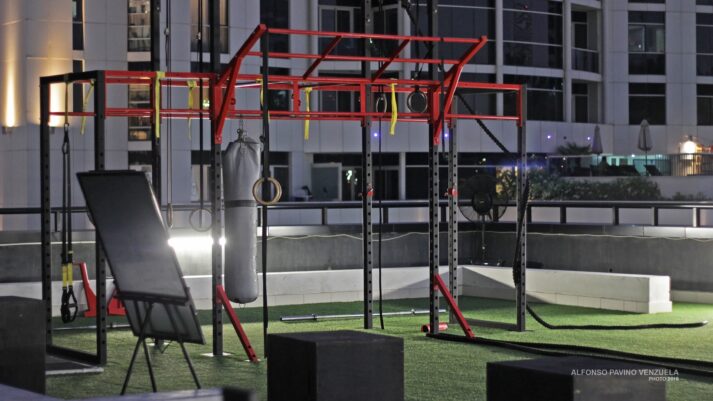
We talked about preparation. We’ve talked about specific areas of the gym. Let’s go back to common gym etiquette:
1) Consulting Randos
As long as there have been gyms, there have been “Brothers”. And as long as there are “bros,” there’s “bros science.” This usually means advice being thrown around the gym that can be true, false or just plain ridiculous.
Men: Feel free to listen to any advice given, nod your head politely and then continue with your workout as before. If you’re really curious, research the advice afterwards. Steve was recently told by an older man that squatting below parallel would hurt his knees – Steve nodded politely, then returned to deep squats.
Ladies: Feel free to listen to any advice given, nod your head politely, and then continue with your workout as before. Women may find themselves being put down by a male member of the gym – given “advice” or off-hand comments.
Stacy, our senior coach who deadlifts 400+ pounds, often has the brothers remind her that “the big ones are 45-pound plates, don’t hurt yourself.” She then proceeded to load 4 of them on either side of the bar and ejected the brother. He quickly shut up, but there’s always someone else to take his place, eh.
His advice for this situation:
“If someone treats you like you’re an idiot, or if they start telling you you’re doing things wrong, I always repeat a very simple and polite line: ‘I appreciate your input. I do, but I have to finish my workout.” Now. I am on a tight schedule.
It doesn’t matter what they said or if they are wrong. go ahead.”
2) Advising Randos
I don’t give unsolicited advice unless someone is putting themselves or others in immediate danger. No one appreciates a “know it all” even if one needs it, and you never know someone’s goals, past or present injuries or experience.
They must be doing exactly what they need to be doing!
3) making noise/insulting
While some gyms may forbid you to make noise, many gyms are okay with making a little noise while lifting.
Every gym is going to have a different vibe, but generally speaking, you’re going to be making some noise (think karate “kiai!”) while fighting the hard part of the lift.
Loud and incessant yelling and screaming, like someone electrified your barbell, often raises eyebrows because it’s very distracting to other people exercising.
profanity? If you’re at a gym that’s okay with profanity while lifting, you’ll soon know it. Just assume that people don’t want to hear you dropping F-bombs around them. Weight training is cathartic, but we don’t need to be that crazy.
4) Lose weight
We’ve already talked about dumbbells (don’t drop them) and barbells in the squat rack (collapse correctly, just don’t drop once over the metal pins).
It is perfectly acceptable to reduce weight when using bumper plates. These are plates with a rubber coating and are often used for Olympic weightlifting (cleans, jerks and snatches). These bumper plates can be safely dropped and make exiting the Olympic lift much safer.
If you are not used to hearing this type of weight loss, it will sound like a bomb went off near you! no fears! You’ll soon get used to this common sound at the gym.
If you’re dropping these loads yourself, don’t just drop them and let them fly anywhere. Keep your hands with weights to keep them in your lifting zone.
When in doubt about losing weight – ask the gym staff!
5) Don’t stare and don’t be scared’
It’s good life advice, but it can be incredibly distracting (and a little scary) for anyone at the gym. I know that whatever the person is carrying can be impressive, but standing and staring is – in their view – quite distracting!
I include this because it happened to me. Clearing some weights, and a guy was standing (no) about two feet (no) in front of me and lifting me up, like I was a television (no, no, no). Stacey deals with that. And gentlemen, just because you’re staring at someone through 8 different mirror reflections – if you can see them, they can see you. You’re not smart, you’re scary.
6) Cell phone use
We understand that having a cell phone on the gym floor is useful – whether using it as a timer, tracking your workouts, or filming your workouts/techniques.
Avoid loud, distracting conversations on the gym floor (take it elsewhere!) If you can talk loudly on the phone throughout your workout (which I’ve seen people do), you’re doing it wrong. are doing.
Also, if you’re going to sit there scrolling through Instagram or Facebook, don’t occupy a device. You’re there to train, so train!
Lastly, the gym is not your personal movie studio. Any filming should be done so that the number of other people in your video is minimized or eliminated.
Not everyone wants to be the “extra” in your Instagram video! Also understand that people aren’t always going to be on the lookout for your cellphone filming, so be patient if people walk past your camera — they may not know it’s on or what you’re doing.
7) Drinking water and eating food on the gym floor
Protein shakes are fine if you’re into that thing (here’s our thoughts on the supplement). Protein bars are borderline.
What about bringing a gallon of water with you around the gym? If that’s your thing, and you really like the water, then go for it. Please don’t spill it.
Everything else can wait till later. I have seen people eating all kinds of things on the gym floor. one.
8) What if someone is being unfriendly?
As I mentioned earlier, if someone is doing something that is an immediate danger to themselves or others, it is okay to intervene right then and there and warn them immediately. It is more important to keep all our fellow gym goers safe than to worry about offending someone.
If someone is doing some of the other things on this list (and eventually someone will), feel free to point them out yourself.
However, most people would not consider it good, even if they were wrong. The easiest thing to do is to bring this to the attention of the gym staff. They’ll make the best of it – because it’s part of their job!
No More Accidental Esri, Congratulations!

It can seem like a monster list of things you need to remember before ever stepping foot in a gym.
Please don’t stress and don’t get overwhelmed. We’re putting these etiquette rules out there because Rebels ask us about them all the time. We all want to be more comfortable in the gym, and knowing some of these things can help with that. Think of it as a resource that you can refer back to when you need to catch up.
Remember, most of this comes back to the following:
- Be aware of your surroundings
- act like it’s your device
- calm down
The rest are just details – which you will memorize as you continue your fitness journey. Always remember to have fun!
What’s the craziest thing you’ve seen someone do at the gym?
Have any other tips for your fellow gym goers?
Leave it in the comments below!
-gym
PS: still here? Need even more help? you got this.
1) Our popular 1-on-1 coaching program. No more guesswork, no more wondering if you’re doing the right program, no more shame or guilt. Only results that don’t waste, and a plan that doesn’t make you miserable.
We hold you accountable to make sure you actually get your workout in, we answer any questions you have, and we cheer you on every step of the way:
expert accountability and support in your pocket. Learn more about our coaching programs and apps
2) If you want daily prompts for working out at the gym (or at home), check out NF Journey. Our fun habit-building app helps you exercise more often, eat healthier, and upcycle your life (literally).
Try your free trial right here:
3) Join the Rebellion! Our free community numbers millions around the world, and we need cool people like you!
You can join by signing up in the awesome yellow box below, and I’ll send you a bunch of free guides and printable workouts, including our Strength 101 guide!
Download our comprehensive guide
- Everything you need to know about getting strong.
- Workout routine for bodyweight and weight training.
- How to find the right gym and train properly in one.
Photo credits: Brickset Series 17 CMF , Clement 127 Amazing Playground: Bicycle and Football , o0bsessed: Dumbbell , BMiz: Potential , Reiterleid The Lego Overflow , Alfonso Venezuela Elevation Fitness Dubai & Outdoor Gym , Reiterleid Serial Prankster ; awkward weight
The Site cannot and does not contain fitness, legal, medical/health, financial advice. The fitness, legal, medical/health, financial information is provided for general informational and educational purposes only and is not a substitute for professional advice. Accordingly, before taking any actions based upon such information, we encourage you to consult with the appropriate professionals. We do not provide any kind of fitness, legal, medical/health, financial advice. THE USE OR RELIANCE OF ANY INFORMATION CONTAINED ON THE SITE IS SOLELY AT YOUR OWN RISK.
DISCLAIMER
